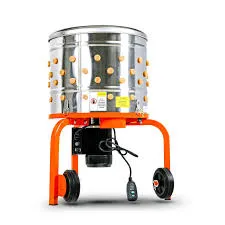Poultry Enclosures for Keeping Birds A Solution for Raising Fowl in Captivity
Jul . 12, 2024 12:59 Back to list
Poultry Enclosures for Keeping Birds A Solution for Raising Fowl in Captivity
Poultry farming is a popular agricultural practice that involves raising domesticated birds such as chickens, ducks, and turkeys for their eggs and meat. One common way to house these birds is through the use of poultry cages.
Poultry cages are specially designed structures that provide a safe and secure environment for birds to live and thrive. These cages are typically made of wire mesh or plastic and are used to confine the birds in a controlled space. There are various types of poultry cages available on the market, including battery cages, colony cages, and free-range cages.
Battery cages are perhaps the most controversial type of poultry cages, as they confine birds in small, crowded spaces. The cages are stacked on top of each other in rows, resembling a battery, hence the name. While battery cages are cost-effective and space-efficient, they have come under scrutiny for their potential impact on animal welfare.
Colony cages, on the other hand, are larger than battery cages and provide more space for the birds to move around. These cages typically house a larger number of birds in a communal setting, allowing them to express their natural behaviors more freely. Colony cages are considered to be a more humane alternative to battery cages.
Free-range cages, as the name suggests, allow birds to roam freely within a designated area

poultry cages. These cages provide the birds with access to the outdoors, allowing them to engage in natural behaviors such as scratching, pecking, and foraging. Free-range cages are often favored by consumers looking for ethically produced poultry products. Poultry cages offer several benefits for both farmers and birds. For farmers, cages provide a controlled environment that helps to reduce the risk of disease transmission and predator attacks. Cages also make it easier to monitor and manage the birds, allowing for more efficient production practices. For birds, cages offer protection from harsh weather conditions and potential predators. Cages also help to prevent the spread of diseases among the flock, ensuring the overall health and well-being of the birds. Additionally, cages can help to improve the quality of eggs and meat produced by the birds. While poultry cages are a common housing option for birds, it is important for farmers to consider the welfare implications of using cages. Farmers should ensure that cages are clean, well-maintained, and provide adequate space and resources for the birds to live comfortably. By taking these factors into account, farmers can ensure the health and happiness of their flock while also improving the quality of their poultry products.

poultry cages. These cages provide the birds with access to the outdoors, allowing them to engage in natural behaviors such as scratching, pecking, and foraging. Free-range cages are often favored by consumers looking for ethically produced poultry products. Poultry cages offer several benefits for both farmers and birds. For farmers, cages provide a controlled environment that helps to reduce the risk of disease transmission and predator attacks. Cages also make it easier to monitor and manage the birds, allowing for more efficient production practices. For birds, cages offer protection from harsh weather conditions and potential predators. Cages also help to prevent the spread of diseases among the flock, ensuring the overall health and well-being of the birds. Additionally, cages can help to improve the quality of eggs and meat produced by the birds. While poultry cages are a common housing option for birds, it is important for farmers to consider the welfare implications of using cages. Farmers should ensure that cages are clean, well-maintained, and provide adequate space and resources for the birds to live comfortably. By taking these factors into account, farmers can ensure the health and happiness of their flock while also improving the quality of their poultry products.
Latest news
-
Automatic Feeding Line System-Pan Feeder Nipple Drinker|Anping County Yize Metal Products Co., Ltd.
NewsJul.29,2025
-
Hot Sale 24 & 18 Door Rabbit Cages - Premium Breeding Solutions
NewsJul.25,2025
-
Automatic Feeding Line System Pan Feeder Nipple Drinker - Anping County Yize Metal Products Co., Ltd.
NewsJul.21,2025
-
Automatic Feeding Line System Pan Feeder Nipple Drinker - Anping County Yize Metal Products Co., Ltd.
NewsJul.21,2025
-
Automatic Feeding Line System - Anping Yize | Precision & Nipple
NewsJul.21,2025
-
Automatic Feeding Line System - Anping Yize | Precision & Nipple
NewsJul.21,2025






